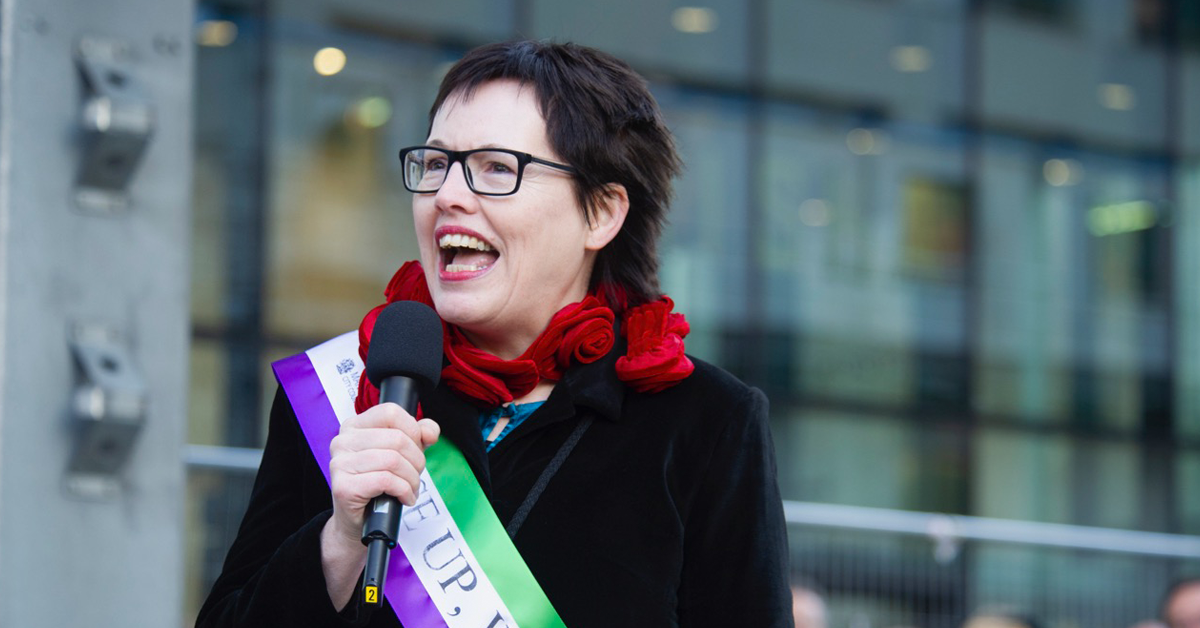As International Women’s Day fast approaches (8 March), we’ve started to think about the women who inspire us and the impact that empowered women in history have had on our everyday lives.
Hazel Reeves is the sculptor behind the recently unveiled Emmeline Pankhurst statue in St Peter’s Square, Manchester. Working from her studio in the West Sussex countryside, she does a lot of work to promote women’s rights internationally. As well as creating the bronze of Emmeline for Manchester, she’s made other artworks celebrating women, including one of women biscuit factory workers, the Cracker Packers, for Carlisle. In this first blog, she talks about what Emmeline – both statue and figure – means to her.
What made you enter the competition for the Emmeline Pankhurst commission?
I saw the call for artists and immediately knew I had to apply. I’m never happier than when I’m combining my passion for portraiture with telling stories of struggles for social justice and redressing the lack of representation of women in public art. Emmeline is a hero of mine, of Manchester’s, and of women’s rights advocates across the world. Easy.
What does Emmeline’s legacy mean to you?
I admire her courage and tenacity in the face of sometimes violent resistance and her ability to inspire women of all classes to rise up and demand the vote. She brought about new forms of activism and pioneered concerns that became central to feminism later in the century.
Gaining the vote and enabling women to stand for public office weren’t just end goals but a route towards women shaping the decisions that affect their lives, challenging and changing discriminatory legislation and carving out space for women to be whatever they want to be. My choices and achievements in life have been hugely advanced by the sacrifices of the suffragettes and suffragists.
It’s befitting that the statue of Emmeline Pankhurst – affectionately known as ‘Our Emmeline’ – was unveiled on 14 December 2018, the centenary of when the first women voted in a general election in 1918. Despite this, both my grandmothers had to wait until 1928 before they were able to vote.
What impact do you want the statue to have and how did you include that in your design?
I wanted the statue to highlight Emmeline Pankhurst’s extraordinary contribution to progressing women’s rights, and remind us of Manchester’s radical legacy as the birthplace of Emmeline and the suffragette movement. But I also wanted her back on Manchester’s streets, to be a catalyst, to move people to action. We need her as much as ever to inspire us all – women and men – to rise up and demand gender equality and demand the end to violence against women. I dedicated the statue to our modern-day Emmelines, who are tirelessly working for women’s rights, and to the future generations of Emmelines.
For the design of the statue I wanted to show Emmeline as the courageous, determined, dignified and elegant activist she was. The scene is one Emmeline would be very familiar with – the suffragettes are ringing bells, summoning people from their homes and workplaces, to listen to Emmeline. Someone grabs a kitchen chair as a makeshift rostrum and the 5ft Emmeline climbs atop and addresses the noisy crowds, urging women to rise up and demand the vote. This design nods to the work she has done but also to the work that is left to be done.



